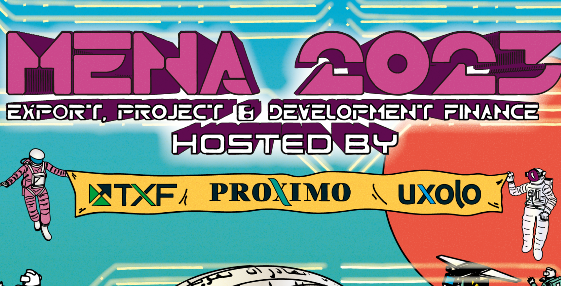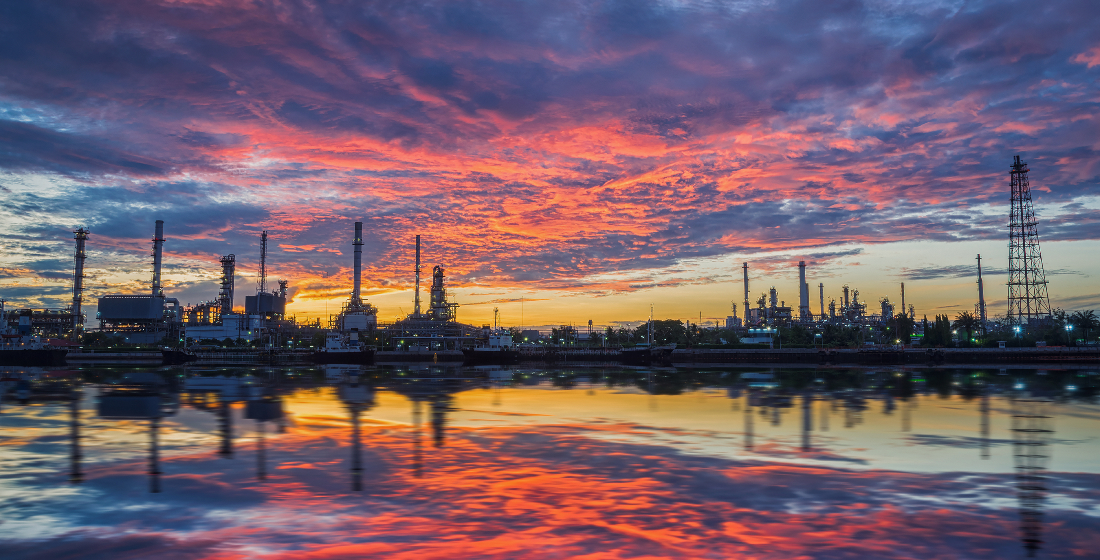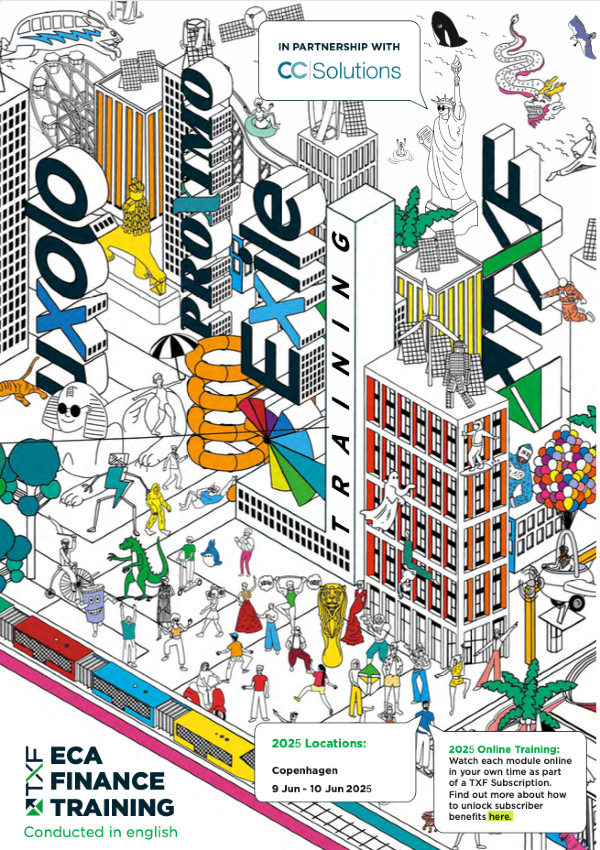TXF MENA 2023: Where ambition meets action
The 2023 TXF MENA event brought together key players in export, project, and development finance to discuss the latest trends in the market. A recent spate of big-ticket projects has made headlines, but just as important were the discussions around support for new exporters as the region diversifies. The energy transition took centre stage as delegates debated MENA’s path away from hydrocarbon wealth.

The TXF roadshow marked another step in its global tour last week as the export finance community descended on Dubai to assess the prospects of the MENA region. Spirits were high as delegates assessed the impact of a number of milestone projects that reached financial close in time for the event. Economic and political instability in a number of MENA countries has not dented appetite for ambitious projects, and industrial diversification is the watchword for the present.
According to TXF Intelligence, export finance volumes in the region have languished for a number of years, since a peak of $39.2 billion in 2016. Volumes have not risen above $15 billion since then, with an average of 30 ECA-backed deals per year. The region is facing a period of transition as ECAs withdraw support for the hydrocarbon projects that have been essential to growth, but the pipeline for emerging sectors like renewables, transport, new-tech and related industries, and social infrastructure looks strong. One key trend that TXF Intelligence also draws out is that ECA-backed deals are significantly increasing across North Africa – primarily in Egypt.
The ECAs were not alone in Dubai; this year TXF joined forces with our sister brands Proximo (project finance) and Uxolo (development finance) to bring together major players across export, project, and development finance. As borrowers look for more and more flexibility in their financing arrangements, expect to see further examples of cooperation between banks, DFIs, and ECAs in 2023 and beyond. Creative structures that bring together different sources of funding can help to mitigate risk. This is an important consideration given the stark disparity in social stability across the region. While the oil-rich Gulf states enjoy robust growth, economic fragility and war still undermine progress in a number of states, including Libya, Yemen, and Lebanon.
The top takeaways from TXF MENA 2023:
Turning ambition into action
Fossil fuel wealth has brought a weight of expectation for the region’s most prosperous states; MENA expects greater investment in projects that will modernise local infrastructure, and the world demands financing for climate-friendly initiatives. It was significant that the conference began with keynote speeches from Raja Al Mazrouei, Acting CEO of Etihad Credit Insurance (ECI) and Khalil Al Mansouri, Acting Director General of Abu Dhabi Exports Office (ADEX). Together they emphasised the UAE’s efforts to transform itself into a hub for green technology and innovation ahead of November’s COP 28, which is due to be hosted in Dubai.
Technology risk is still an important consideration
Hydrogen was a common topic across both days, thanks in large part to Saudi Arabia’s $8.5 billion NEOM green hydrogen project, which was signed in the weeks before the event. It is a landmark deal, but there is a way to go before banks are comfortable with the technology risk. ECAs were keen to highlight the progress that has been made in renewables and battery storage technology, sectors that faced similar challenges just a few years ago.
Untied lending is here to stay
The growing association between commodity traders and ECAs was highlighted by a panel session on Trafigura’s recently announced $135 million untied deal with ADEX and SMBC. While the sum is innocuous in the context of Trafigura’s banking lines, a partnership between an ECA and a major trader is just as much about the future opportunities to secure supply chains for both imports and exports. With the UAE looking to diversify its exports, this untied deal carries a valuable commitment to future procurements.
MENA is looking to diversify
Hydrocarbons have been essential to much of the region’s growth in recent decades, but the onset of climate change has forced leaders to broaden their investment plans. Untied facilities represent a new frontier for countries that previously limited themselves to project and sovereign finance, while others are reaching out to ECAs for the first time. The NEOM hydrogen facility, Egypt’s flagship Green Line high-speed rail project, and Qatar’s $5 billion Ras Laffan petrochemicals deal show a commitment to sector diversification. In addition, ECA finance is also being used to significantly upgrade existing industries – a case in point is last year’s $400 million SERV-backed loan for Egypt’s Cotton, Spinning, Weaving & Garment Holding Company to replace machinery in the highly important textile sector.
The keyword is transition
Renewable technology has made significant progress in the region, led by the success of Amunet and Zarafshan, the pathfinder wind projects in Egypt and Uzbekistan. However, widespread uptake of clean energy is unrealistic when much of the region still suffers from chronic power shortages. The urgency of climate change will increasingly be felt in MENA as water shortages become more common, but this must be balanced with the need to generate revenue to fund the transition.
ECAs and ESG
Borrowers cherish flexibility from their ECA partners, and it is a credit to MENA’s newest ECAs that many delegates praised their speed of transaction in comparison to their OECD counterparts. However, as more and more institutions withdraw funding for oil and gas, a minefield of competing ESG guidelines, as well as the confusion of different taxonomies, threatens the financing prospects of new projects. If strenuous due diligence procedures are undermining projects with positive social outcomes, then a recalibration is required.
Collaboration imparts confidence
ECAs are known as the lenders of last resort, but they cannot always act unilaterally on big-ticket projects with challenging risk profiles. DFI collaboration with ECAs can inspire greater confidence among the wider lending pool through transparent procedures, tailored ESG guidelines, and local knowledge. For emerging markets looking to take advantage of project and export finance for the first time, DFI leadership is essential.
PIF will lead the way for Saudi Arabia
The scale and breadth of Saudi Arabia’s investment portfolio is already startling. The sovereign wealth fund leads the way but there will be opportunities for project developers and ECAs to secure deals as more announcements are made. The nation’s so-called ‘giga-projects’ have been well publicised – they include NEOM hydrogen, the Qiddiya entertainment city complex, the Line, and the Roshn urban regeneration project. On top of this, PIF is in the procurement phase for facilities in water, power, transport, and many more sectors besides.
More education on credit insurance will be key
Uptake on all forms of credit insurance in the region remains relatively low. While the industry’s biggest banks will absorb the additional cost as a part of the project, the price will continue to drive away smaller players looking to protect their margins. The emergence of several local ECAs in the region in the past few years is positive, but they will take time to hit their stride. In an uncertain economic environment, communicating the benefits of cover, whether from ECAs or the private credit and political risk insurance market, will help to stimulate the demand and spare capacity required to bring down costs. With more deals being booked by major banks in Dubai, the expansion of the private insurance market will be key to business being done in situ rather than being pushed back to other international centres.





